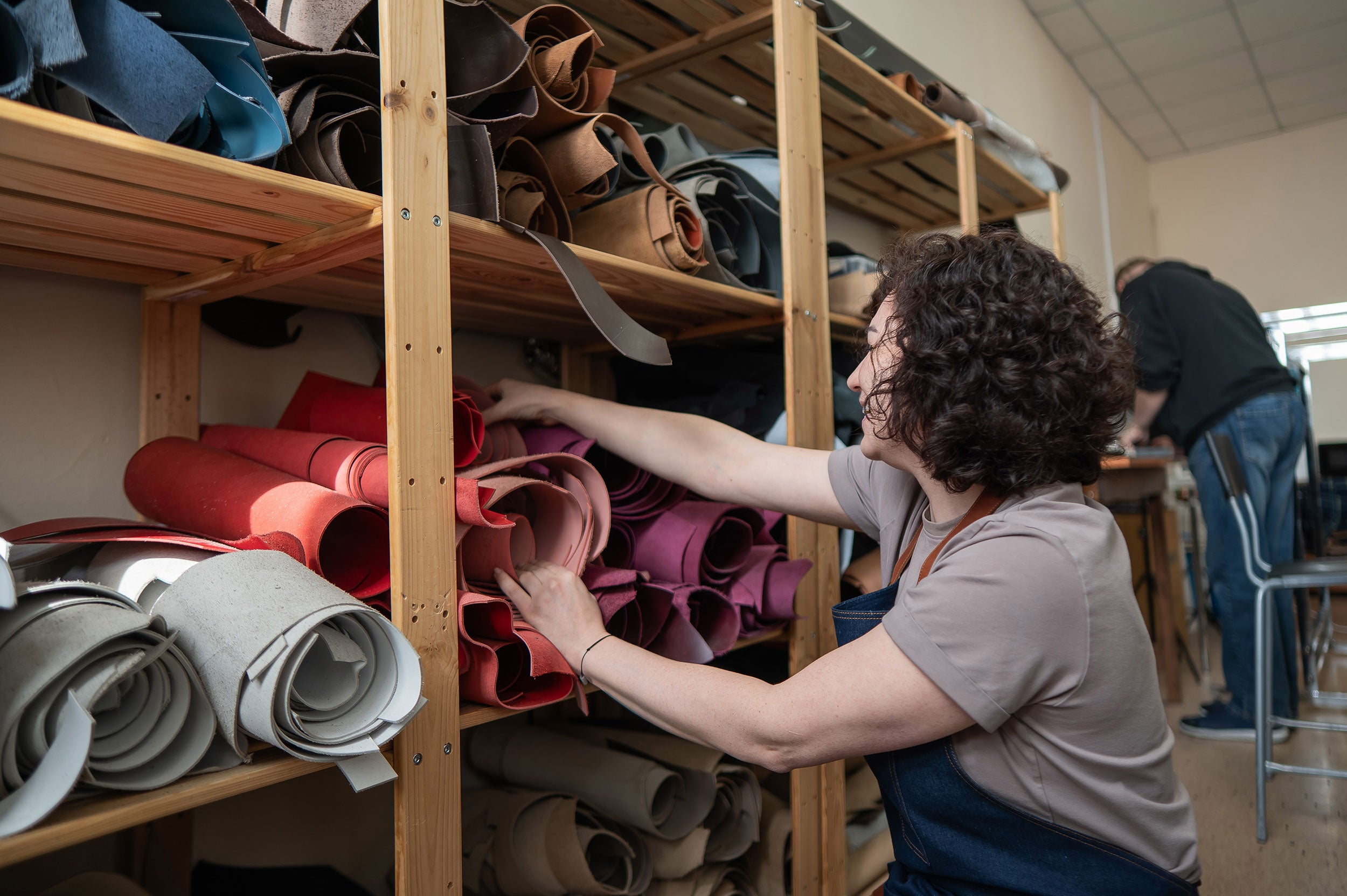I see leather as one of the most traditional and sustainable fabrics out there. It has many uses and remains one of the strongest and most durable materials for a variety of products, and because it is natural, it will biodegrade after 10 to 50 years in a landfill, depending on the tanning chemistry used. Leather making has been around for hundreds of thousands of years, so let’s take a high-level look at how leather is actually made.
Leather starts with an animal hide. Cattle hides are most commonly used, but hides from other animals can also be used (for example, footballs have long been referred to as “pigskins,” even though they’re cowhide or synthetic these days).
First, hides need to be preserved so they don’t deteriorate and can be transported to the location where the rest of the leather production process is completed. Hides are often covered in salt, but they can also be frozen, chilled, or treated with chemicals to preserve and cure the hide. This step has remained the same ever since leather was first produced — evidence for hide-working and tanning exists from 400,000 years ago.
After being cured, the hides will be soaked in water for a few days to rehydrate them and remove any salt and lingering dirt and debris. Hides will also be treated with other solutions, and the remaining hair will be removed. This ensures the hide is clean and soft.
Next, the hide will be split by a splitting machine. The different layers of the hide make up different types of leather, with the top of the hide (known as full-grain leather) producing high quality, thick leathers, and the bottom of the hide producing lower quality leathers, like suedes. The thickness of the leather is adjusted depending on the type of goods being produced — for example, a pair of boots will need thicker, stronger leather.
Next, the alkali in the hides needs to be neutralized, then enzymes are applied to the hide to make it relax and flatten out. Then, weak acids or salt solutions are applied to the hides. They need to be slightly acidic before the tanning process begins.
Then the tanning process starts. The hides (called pelts at this point) are placed in a drum alongside a tanning agent. Tanning agents can be vegetable-, oil-, or mineral-based. Mineral tanning is normally done using chromium salts and is the most common tanning material. Oil tanning makes a much softer leather, and vegetable tanning uses plant extracts. This process softens and preserves the leather.
After tanning, the pelts are finally considered to be leather. The leather can be split after tanning if it wasn’t split in preparation of tanning. The leather is also shaved down to uniform thickness. The tanning process can be completed multiple times if needed.
After that, the next step is neutralization. This step removes any residuals from past chemical applications. Then the leather can be dyed any number of colors, depending on the end product. After this is completed, oil is applied to the leather so it remains soft as it dries. Then the leather is stretched and dried until the water content is below 20 percent. The leather is then massaged in a staking machine and dry tumbled, processes that further ensure the leather is flexible and soft.
The leather is subsequently buffed and brushed. Finally, the finishing process can add gloss, minimize blemishes, and many other finishes can be added to make the leather waterproof, among other things.
The leather production process is long and steeped in tradition. And while this was a general overview of the process, it can vary greatly based on what end product the leather is meant for. This is a product that can be used for making shoes, gloves, purses, clothing, furniture, automotive upholstery, saddles, watch bands, belts, and much more. Leather is a strong material that can last for years if properly cared for. In fact, leather can be passed down for generations if it is taken care of.
Leather is also a byproduct. Some people, however, claim that leather is not a byproduct and that it actually drives the production of cattle. This is why critics of leather claim that leather alternatives are better, since they don’t contribute to the amount of cattle harvested. This can also turn into a sustainability argument, with opponents saying that leather actually isn’t sustainable since it takes a lot to raise an animal solely for its hide. But because no one actually raises an animal simply for its hide, the claims from opponents don’t tend to carry much weight.

Leather is a byproduct of the cattle industry. A recent analysis of the cattle industry found that the meat of an animal accounts for 90 percent to 92 percent of the animal’s total live value. Traditionally, hides accounted for 6 percent to 8 percent of the animal’s total live value. In more recent years (especially in 2020), hides accounted for only 1 percent of the animal’s total live value.
There is no reason for cattle to be slaughtered solely for their hides — that would be a complete waste of a lot of meat and other byproducts. Instead, cattle are used for what they’re normally used for, meat, and their hides are used for leather as a byproduct.
Generations of people have used leather for a wide variety of items, and it remains a traditional and important part of the world today. Leather also comes across as extremely sustainable since it is made from byproducts of other industries and when it’s properly cared for, can be used for many years. Faux leather, on the other hand, is generally believed to last from two to five years, with some instances going longer if cared for in ideal circumstances.
Real leather is also strong and durable and has many uses. The next time you need to purchase something, look for a leather version to support agriculture and gain a high-quality item that will be around for years to come.
Michelle Miller, the Farm Babe, is a farmer, public speaker, and writer who has worked for years with row crops, beef cattle, and sheep. She believes education is key in bridging the gap between farmers and consumers.



